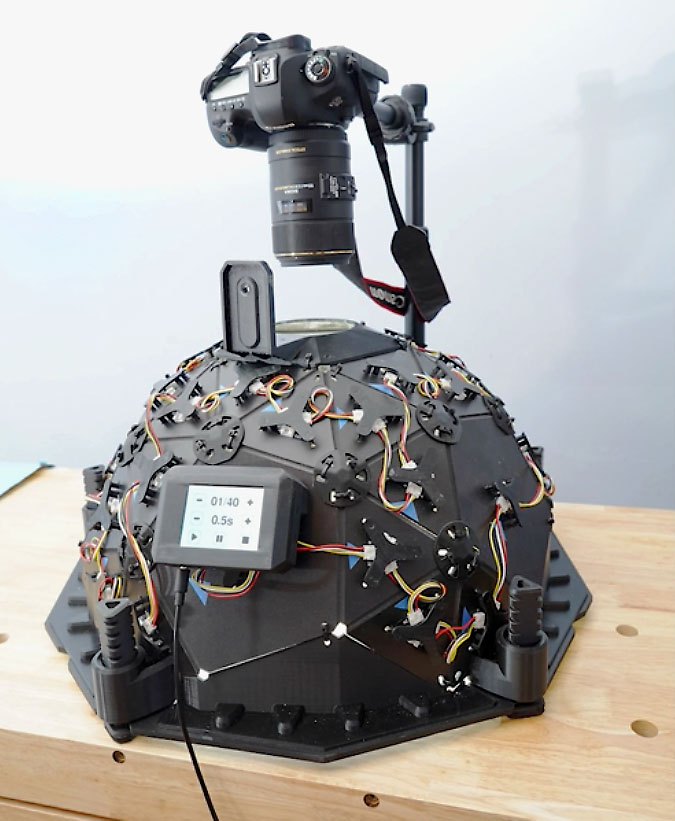Reflective Transformation Imaging (RTI) - Ted Kinsman FBCA
Ted Kinsman, Rochester Institute of Technology
Reflectance Transformation Imaging (RTI) is an imaging technique that creates hyper-realistic digital surrogates that are interactively controlled by the viewer. This new method is based upon the synthesis of multiple digital images of a subject in a fixed position collected from a fixed camera position.
Reflectance Transformation Imaging (RTI) is a computational photographic technique used in a number of fields related to art examination and documentation. RTI provides a virtual and enhanced visualization of an object’s surface where the lighting direction can be changed interactively, and enhancements can be performed to make surface’ details more visible. It relies on the Polynomial Texture Map method which is an image-based representation of the object’s surface achieved by capturing the object under lighting from different directions. It is used to visualize tiny incisions in paintings and historical prints as well as to document highly reflective objects such as coins.

RTI was invented by Hewlett Packard Labs researcher, Tom Malzbender, in 2001, taking the initial form of Polynomial Texture Mapping (PTM). This open-source software has been adopted and developed by Cultural Heritage Imaging (CHI) and has found its niche with cultural heritage and natural history objects. The technique involves the capture of multiple images with the subject and camera position fixed and the light source varying. The series of images are lit from a point source of light that is at a constant radius from the subject but relocated through a virtual hemisphere of positions.

The software processes the multiple images into a single file that derives all possible light positions within the virtual hemisphere of light. The final image looks like a 2D photograph but is actually the documentation of the subject’s surface interaction with the light positions, at the individual pixel level. The viewer can control the light direction, zoom in and out, and select data enhancement options that increase sharpness and contrast and even change surface properties. For instance, non-reflective surfaces such as textiles can be given a metallic surface quality to increase legibility and remove color and stains.
 A new portable RTI lighting dome has been trialled and is now under development in collaboration with Dodec. The Trio Lighting Dome features automatic image collection and rolling shutter on camera. With easy setup and simple operation, the Trio Lighting Dome collects images in under 2 minutes. We hope to have the dome on the market by early summer.
A new portable RTI lighting dome has been trialled and is now under development in collaboration with Dodec. The Trio Lighting Dome features automatic image collection and rolling shutter on camera. With easy setup and simple operation, the Trio Lighting Dome collects images in under 2 minutes. We hope to have the dome on the market by early summer.
The example used in this article is the head of the Louis Schmidt Cane.
Ted Kinsman is a Professor of Photographic Sciences at Rochester Institute of Technology (RIT) where he teaches technical imaging.Ted presented on RTI at the 2022 BCA symposium and more recently at the Forensic Photography Symposium in January, 2023. Learn more about Ted here:
https://www.instagram.com/tedkinsman/?hl=en
https://www.rit.edu/directory/emkpph-ted-kinsman
